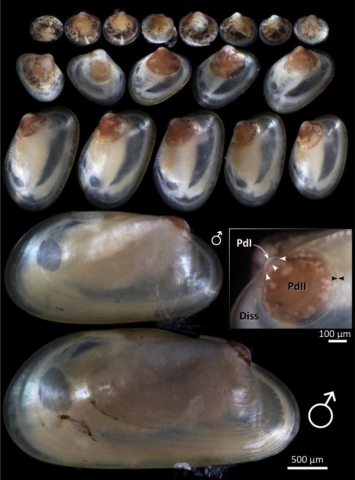
Adapted to change: The rapid development of symbiosis in newly settled, fast-maturing chemosymbiotic mussels in the deep sea.
Sven R. Laming , Sebastien Duperron, Sylvie M. Gaudron, Ana Hilario, Marina R. Cunha. Marine Environmental Research, 112 (2015) 100-112.
Symbioses between microbiota and marine metazoa occur globally at chemosynthetic habitats facing imminent threat from anthropogenic disturbance, yet little is known concerning the role of symbiosis during early development in chemosymbiotic metazoans: a critical period in any benthic species' lifecycle. This paper describes the post-larval development of the small mussel Idas simpsoni and the onset of its symbiosis which involves cemoautotrophic, sulfur-oxidizing bacteria mussels undergoing development. Post-larval development shows similarities to that of both heterotrophic and chemosymbiotic mussels. Newly settled specimens are aposymbiotic. Symbionts subsequently colonise multiple exposed, non-ciliated epithelia shortly after metamorphosis, but only become abundant on gills as these expand with greater host size. This widespread bathymodiolin recorded from sulphidic wood, bone and cold-seep habitats, displays a suite of adaptive traits that could buffer against anthropogenic disturbance.
